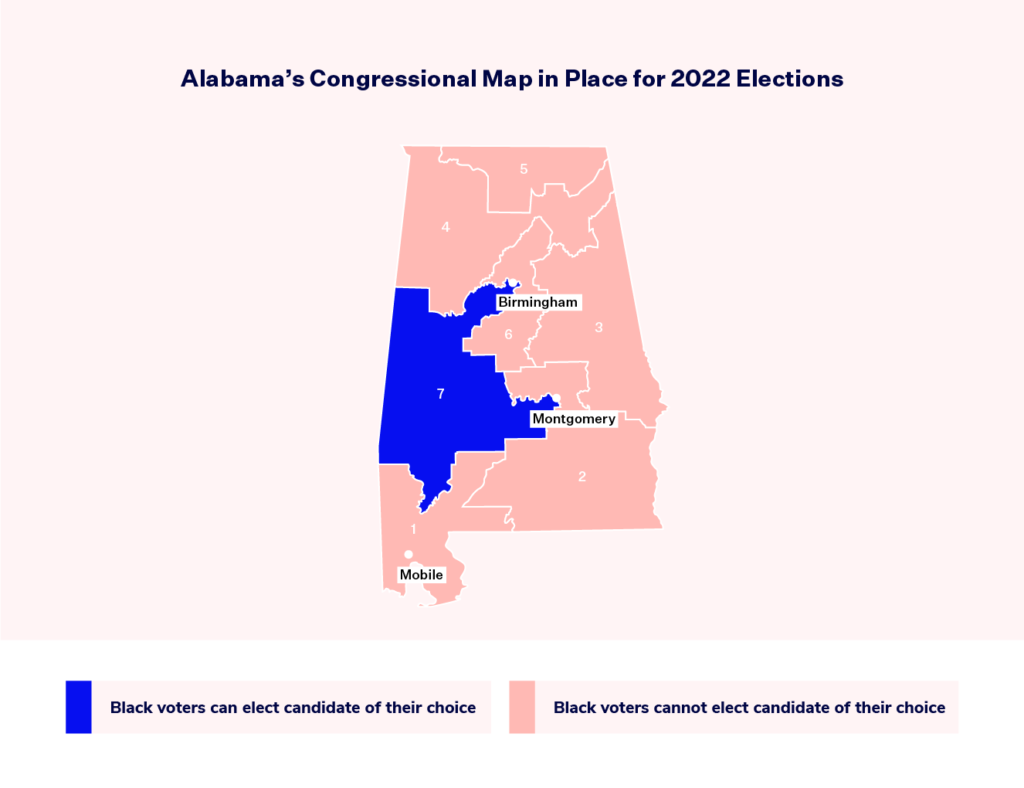The Voting Rights Act of 1965 (VRA), a federal law adopted during the height of the civil rights movement thanks to the tireless efforts of Black activists, enforced the 15th Amendment’s guarantee that the right to vote can’t be denied “on account of race” and addressed barriers that prevented Black voters from casting their ballots. The law, which has been amended five times since its adoption, currently provides a wide range of protections to ensure that eligible voters are not denied the right to vote on account of race. In response to the great success of the VRA in expanding and protecting voting rights across the country, those seeking to suppress voters have focused on stripping the law of its most crucial provisions. Unfortunately, in recent years, far-reaching efforts seeking to curtail the VRA have made noticeable progress.
Marc and Paige are joined by Abha Khanna, one of the attorneys who argued the case before the Supreme Court, to break down what the decision means for voters, why it is a victory for democracy and how it’ll impact future redistricting cases.
A well-known example of this came in 2013 when the conservative majority of the U.S. Supreme Court struck down the heart of the VRA, thereby ending the preclearance regime that ensured jurisdictions with a history of voter suppression and racial discrimination obtained approval before changing any voting laws or redrawing maps. This decision meant that another part of the VRA, Section 2, became an even more crucial tool in fighting back against discriminatory voting laws and maps, particularly in states that were previously under preclearance. In response to this shift, voter suppressors found a new target.
The most litigated section of the VRA, Section 2 prohibits any voting law, practice or map that results in the “denial or abridgement of the right of any citizen of the United States to vote on account of race or color.” This provision provides a mechanism for challenging laws and maps that were enacted with a discriminatory purpose or have a discriminatory impact. A case out of Alabama that focused on Section 2 made its way up to the nation’s highest court during the 2022-23 Supreme Court term.
What does a redistricting case out of Alabama have to do with Section 2?
In November 2021, voters and non-profit organizations sued over Alabama’s new congressional map drawn with 2020 census data, arguing it diluted the voting strength of Black Alabamians by only drawing one majority-Black district in violation of Section 2. After a district court blocked the map and ordered the creation of a new map with two majority-Black districts, the Supreme Court stepped in and paused this order, ensuring that the state’s previously blocked map — which only contains one majority-Black district — was in place for the 2022 midterm elections. The Court then placed the case on its merits docket and held oral argument on Oct. 4, 2022.

On June 8, 2023, the Supreme Court issued a 5-4 decision that affirmed the lower court’s decision to strike down Alabama’s congressional map. In doing so, the Court affirmed the current application of Section 2 of the VRA. The majority opinion was written by Chief Justice John Roberts and joined by Justices Sonia Sotomayor, Elena Kagan and Ketanji Brown Jackson and joined in part by Justice Brett Kavanaugh.

Given Section 2’s wide range of protections — particularly relevant in lawsuits challenging maps in states with histories of racial discrimination such as Georgia and Louisiana — the reaffirmation of its framework will have monumental effects on voting rights across the country. As of June 12, there are 32 active Section 2 lawsuits ongoing across 10 states.